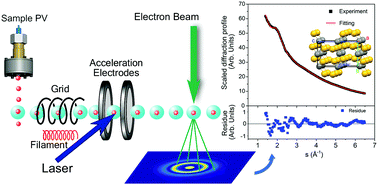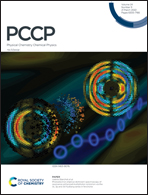Electron diffraction as a structure tool for charged and neutral nanoclusters formed in superfluid helium droplets
Abstract
This perspective presents the current status and future directions in using electron diffraction to determine the structures of clusters formed in superfluid helium droplets. The details of the experimental setup and data treatment procedures are explained, and several examples are illustrated. The ease of forming atomic and molecular clusters has been recognized since the invention of superfluid helium droplet beams. To resolve atomic structures from clusters formed in droplets, substantial efforts have been devoted to minimizing the contribution of helium to diffraction signals. With active background subtraction, we have obtained structures from clusters containing a few to more than 10 monomers, with and without heavy atoms to assist with the diffraction intensity, for both neutral and ionic species. From fittings of the diffraction profiles using model structures, we have observed that some small clusters adopt the structures of the corresponding solid sample, even for dimers such as iodine and pyrene, while others require trimers or tetramers to reach the structural motif of bulk solids, and smaller clusters such as CS2 dimers adopt gas phase structures. Cationic clusters of argon clusters contain an Ar3+ core, while pyrene dimers demonstrate a change in the intermolecular distance, from 3.5 Å for neutral dimers to 3.0 Å for cations. Future improvements in reducing the background of helium, and in expanding the information content of electron diffraction such as detection of charge distributions, are also discussed.

- This article is part of the themed collections: 2022 PCCP HOT Articles and PCCP Reviews


 Please wait while we load your content...
Please wait while we load your content...